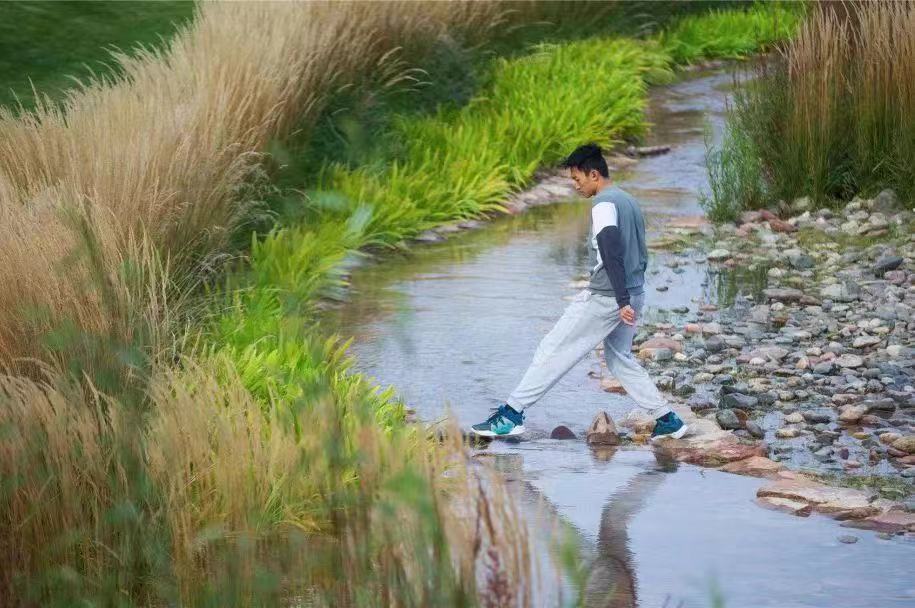The design and implementation of the flood canal take into consideration different levels of water.
During periods of relatively low water levels (below the 5-yr level), the canal resembles a natural stream. A small flow of water runs through gravel and stones, passes over a weir, scatters in shallow areas, and eventually disappears among wetland plants. This scenic stream continues even on non-rainy days through the use of stored rainwater.
At the 30-year level, the canal serves as a boundary for different types of plants. Above this level, groups of trees and shrubs are planted, while below it, various species of Miscanthus are cultivated. These plants are well-suited to fluctuating water levels and protect against the force of large flood flows.
At the 50-year level, all pathways in the park are elevated above the flood level, ensuring that they remain accessible and cannot be submerged. Along the canal, various amenities are strategically placed to cater to the well-being, comfort, and enjoyment of the citizens. This includes gym facilities, a basketball court, a playground, and shaded seating areas.
Overall, the flood canal area is designed to provide a pleasurable experience for visitors, offering a sense of tranquility, recreational opportunities, and a connection with nature.
Flood engineers and landscape architects understand that design encompasses much more than mere decoration. They collaborate to create functional and aesthetically pleasing spaces that consider both the practical aspects of flood control and the overall visual and experiential qualities of the environment.
Studying nature is indeed a valuable approach when creating landscapes. Drawing inspiration from natural ecosystems can help landscape architects design spaces that are harmonious with the surrounding environment and promote ecological balance. We found Nature-based Solutions and Sponge City are both very useful in the design.
